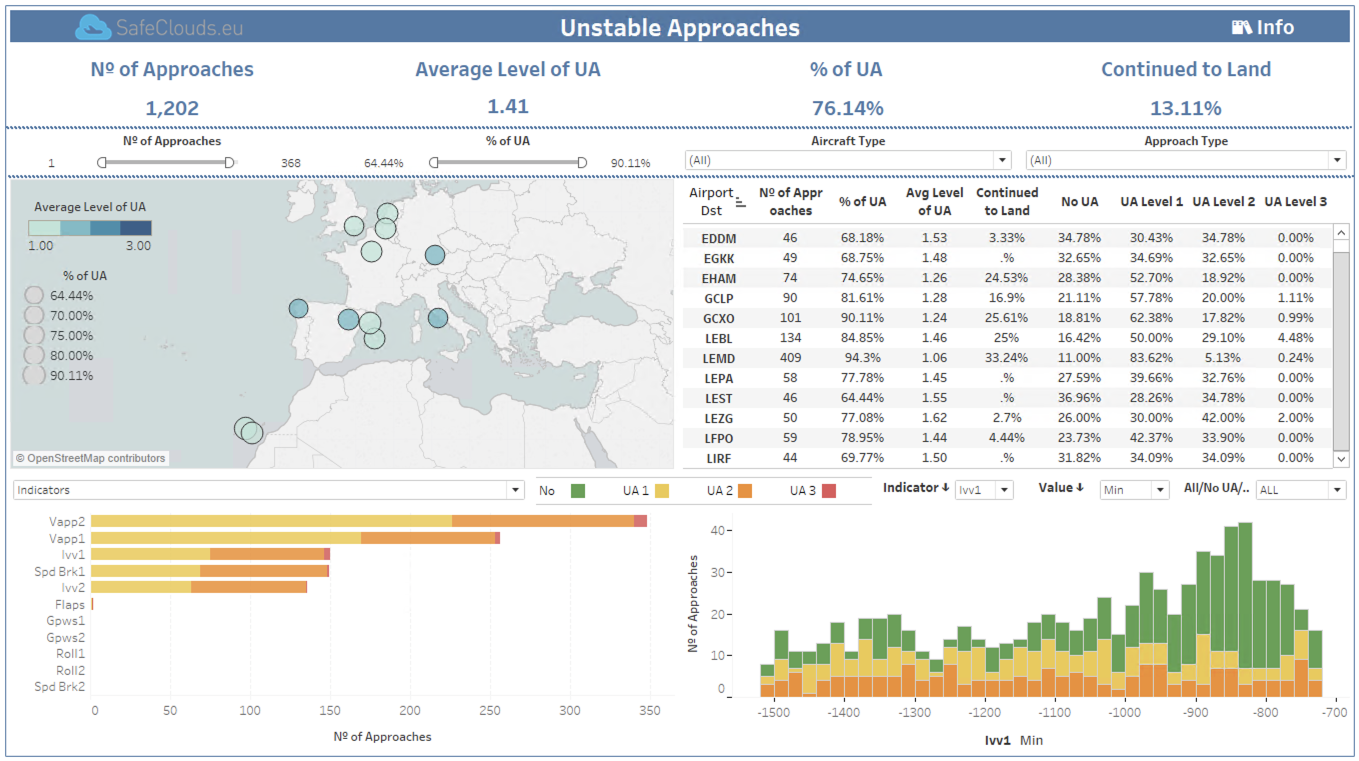Time flies when you’re having fun…and flies even faster when you’re busy with work! Along that same note, these past three years working on SafeClouds.eu have been really exhausting, but also really fun!
This has been thanks to the amazing team we have built up together, with 5 airlines (AirEuropa, Iberia, Norwegian, Pegasus and Vueling), 3 ANSPs (ENAIRE-CRIDA, LFV and Austrocontrol), Eurocontrol, and 2 safety authorities: the European EASA and the Spanish AESA. These airspace users and key stakeholders have been the main driver of our research. At the proposal stage, back in 2015, these entities supported the idea of testing how machine learning techniques could help them, with their day-to-day work, further improve aviation safety, learn more about why incidents and accidents happen, and design and implement mitigation actions adapted to their actual hazards. All of these entities pioneered safety intelligence by making use of the latest technologies in data science and machine learning and offering their data for testing. Traditional safety analysis used to be based on case-by-case study of incidents (and investigation of accidents). Now, current computation capabilities and data analysis techniques have paved the way to a new (complementary) approach where massive amounts of data can be analysed, covering not only isolated detected incidents but also “perfect” flights. This helps identify patterns and hidden trends in flights and, ultimately, helps predict events and propose mitigation actions before they happen. The role of these entities, as aviation safety experts, has been key in defining appropriate research questions and understanding their results.
For the development and implementation of this safety analysis, the consortium has included 6 research entities (Innaxis as coordinators, TU Munich, Fraunhofer ITWM, CRIDA, Linköping University, TU Delft) alongside the SME TADOREA. The team has a wide spectrum of skills, including: data architectures, data preparation, analysis and visualization. This amounts to 17 partners working together to improve aviation safety intelligence under the framework of an H2020 applied research project.
The first milestone of the project was to gain access to different sources that could feed the ML models. The initial reluctance of data owners to providing access to their data was overcome by developing an scalable, on-demand computing platform with several security layers that de-identified data while providing the capability of merging data with other data sources. This platform, DataBeacon, enables collaboration in AI applications without compromising data confidentiality by giving data owners full governance of their data assets. DataBeacon has had the unique advantage of building trust among data owners and breaking initial data silos (etc.). More than 700.000 flights from the 5 airlines, 3 years of data from 15 different sources have been prepared and fused in DataBeacon for the analysis.
Both descriptive and predictive analysis of historical data have been performed under the scope of the SafeClouds.Eu project. The collaboration among the data owners (airspace users), data analysts and architects, has led to a number of case studies applied to different safety scenarios: unstable approaches, terrain proximity, airprox and safe runway utilization. Through an expert selection of the most appropriate data science and ML algorithms, a number of user-driven questions have been answered: the main precursors of an unstable approach have been discovered for each airline, the contributing factors to why certain aircraft occupy the runway longer than expected have been unearthed and provided to controllers, the possibility of predicting an aircraft missing the procedural runway exit has been tested and validated, the precursors of a loss of separation between aircraft pairs have been analysed. Collaboration between analysts and domain experts is key both for the problem definition and the interpretation of the results. This collaboration is also important in the development of data visualization dashboards of results, as presenting the data analysis results in a digestible format is essential for ensuring results are relevant for its user. DataBeacon includes a data visualization framework jointly developed by data visualization experts, analysts and data owners.




